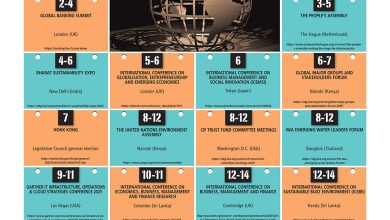NEW FRONTIERS
Fazmina Imamudeen explores our wacky and wonderful world

CONNECTED ROADS In the US state of Utah, radio transmitters in commuter buses communicate with traffic signals and request extended green lights to reduce congestion. The system is part of ‘Connect the West,’ a larger initiative which aims to enable all vehicles in Utah, Colorado and Wyoming to communicate with each other and roadside infrastructure about traffic conditions, accidents and the weather.
This technology, which is known as ‘vehicle-to-everything’ (V2X), allows cars to transmit real-time data about road conditions, and potentially prevent hundreds of thousands of accidents and save over a thousand lives annually.
The United States Department of Transportation unveiled a national blueprint for V2X deployment with goals for major metropolitan areas to equip 25 percent of their intersections with this technology by 2028.
While privacy concerns exist, proponents argue that the benefits outweigh the risks. Similar projects that focus on connected vehicle corridors and smart freight transportation are underway in Michigan and Texas. As this technology evolves, it promises to revolutionise road safety and efficiency across the US.
CIRCULAR PLASTIC Scientists at the University of California, Berkeley, have developed a catalytic process that efficiently breaks down common plastics into reusable chemical building blocks. This innovation targets polyethylene and polypropylene, which constitute about two-thirds of post-consumer plastic waste worldwide.
The new process uses inexpensive solid catalysts – sodium on alumina and tungsten oxide on silica – to break polymer chains and convert them into valuable monomers such as propylene and isobutylene. The method works effectively on both pure and mixed plastic waste with conversion rates of nearly 90 percent.
Unlike previous attempts, the technique being used now doesn’t require the removal of hydrogen to create breakable bonds in the polymer chain. It also performs well in the presence of common plastic additives and contaminants.
The development of this process marks a significant step towards a circular economy for plastics. Enabling the efficient recycling of widely used plastics back into their original building blocks could reduce reliance on fossil fuels for new plastic production and help address the global plastic waste crisis.
VIRTUAL EXERCISE Researchers at the University of Bath developed a groundbreaking approach to improving adherence to VR ‘exergames’ (exercise games). The study focusses on incorporating sensors that detect users’ emotional responses during workouts and allows games to adapt in real time to maintain engagement.
Dr. Dominic Potts and his team used a combination of sensors to measure various physiological changes including pupil size, facial expressions, heart rate and skin conductivity. These sensors, potentially embedded in virtual reality headsets and wearable devices, can accurately track users’ emotional states during physical activity.
The research involved 72 participants in a VR static bike race. It exposed them to different virtual environments that were designed to induce specific emotions at varying exercise intensities. And the team was able to successfully match the game’s difficulty and environment with the users’ physiological changes.
Based on their findings, they developed eight guidelines for virtual reality exergame creators to enhance emotional engagement. These include correcting for luminosity changes, considering preexisting perspiration levels and using multiple physiological sensors for improved emotional state predictions.
This innovation could revolutionise VR exercise by making it more personalised and emotionally intelligent, potentially increasing long-term user commitment to physical activity through gaming.
AVIATION TRIALS NASA’s Sustainable Flight Demonstrator (SFD) project is pushing the boundaries of aviation sustainability with its X-66 aircraft. In an innovative move, the project is repurposing a retired McDonnell Douglas MD-90 cockpit to create a high-fidelity simulator for the Boeing X-66 experimental airliner, showcasing a commitment to sustainability beyond only aircraft design.
The simulator, which is housed at the National Aeronautics and Space Administration’s Armstrong Flight Research Centre (AFRC), will play a crucial role in testing and refining the X-66’s design.
It allows researchers to explore new technologies and scenarios without risking pilot safety or aircraft integrity. The Simulation Engineering Branch at the AFRC will lead the development of this advanced simulator.
The X-66 itself will be constructed using another MD-90 airframe, modified with a shorter fuselage, new engines and a revolutionary truss braced wing design. This project (a collaboration between NASA and Boeing among others) aims to pioneer sustainable airframe technologies that will shape the future of commercial aviation.
By focussing on single aisle airliners, which are the workhorses of commercial fleets, the SFD project seeks to make a significant impact on aviation’s environmental footprint. This initiative represents a harmonious blend of historical components and futuristic engineering that’s driving the industry to a more sustainable future.





